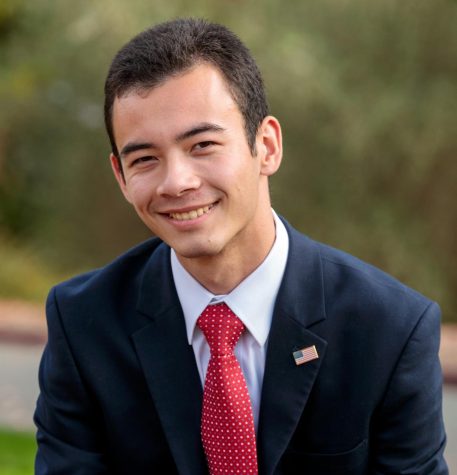School officials seek drought priority
June 3, 2021
Responding to a drought that portends a dry summer, Branson reduced its use of water on landscaping in May, though some school officials have called for a greater priority on conserving the resource.
Marin County, indeed, faces a drought of historic significance. It has observed some of its lowest rainfall in recorded history, and with reservoir levels low, the Marin Municipal Water District approved enforceable restrictions on water use in April.
“I know that this isn’t just a one-time thing, it’s been going on for a while,” Ian Lind, a junior, said. “I have been up to Phoenix Lake, and just seen how low the water level is.”
Science teacher Peter Zdrojewski maintains Branson’s garden, located by the alumni steps. In the past, he has made efforts to make the area more drought-tolerant; the garden includes drip irrigation, an aquaponic system and low-water plants such as figs and pomegranates.
“I want to kind of refine the irrigation system we have there,” Zdrojewski said, looking toward a dry summer. “Recently, I pulled out all the drip irrigation, and I’m going to … rewire it. When [we] do water things, we’re not going to use a lot of water.”
But the garden represents only a small part of Branson’s overall water usage. Landscaping of the school’s 17-acre campus takes up the most water, according to Facilities Director David Schneider, followed by use in restrooms and the kitchen.
Over the past decade, since the construction of the Commons, the school has especially invested in reducing water use in restrooms, he said, installing low-flush toilets and waterless urinals. But the school has left its landscaping, which features verdant lawns across campus, largely unchanged.
“Lawns take a lot of water,” Schneider said. “It’s not a drought-resistant or drought-tolerant type of landscape. But … all of our landscape watering comes from a well, so not MMWD water.”
The school reduced landscape watering to twice a week in May, though it uses water from an on-campus well that has remained stable so far. If the well runs low, Schneider said that the school might focus on maintaining “valuable assets” like trees instead of lawns.
In conserving tap water from drought-stricken MMWD, Schneider said that Branson has made strides in water conservation, particularly in its restrooms. But the school lacks a concrete plan to reduce water consumption.
“There have been conscious conservation efforts, yes,” he said. “As far as a strategy where it’s on paper, written out, no.”
He called for ideas from students on additional ways to conserve, and also said that the school has not made drought-tolerant landscaping a priority. Instead, Branson has focused on its enrollment-increase effort, he said.
“I think overall, we should,” Schneider said, regarding a sharper focus. “And I think any kind of landscape moving forward, we should definitely, definitely — water conservation should be one of the biggest concerns or elements of any kind of planting or design.”
Zdrojewski said water conservation and the drought require a more exigent focus by the school.
“We’re a school that probably is really privileged to have a lot of water over the years, and our landscape probably reflects that,” he said. “I do say the administration/facilities team is aware of what’s going on, and are doing their best to make changes, but I think the urgency is important for us to consider.”
Lind, the junior, commended the school for its various efforts to conserve water, but thinks it could do more to inform students about the issue. “I think the school could do more awareness, like make sure kids know about it and what’s going on,” he said.
“I think a good amount of [my] peers are aware that it’s happening, yet kind of think ‘this isn’t my problem,’ so they don’t take initiative themselves.”




